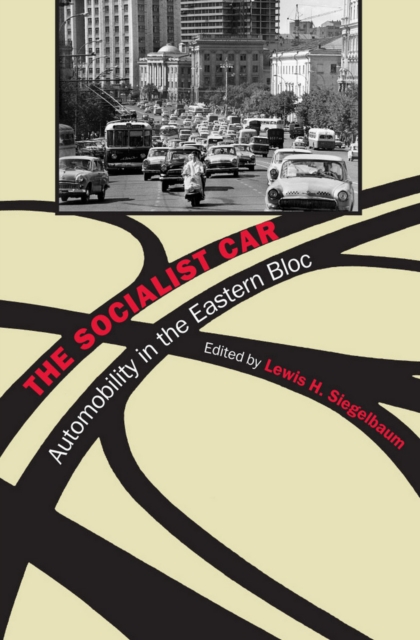The Socialist Car

The Socialist Car
Across the Soviet Bloc, from the 1960s until the collapse of communism, the automobile exemplified the tension between the ideological imperatives of political authorities and the aspirations of ordinary citizens. For the latter, the automobile was the ticket to personal freedom and a piece of the imagined consumer paradise of the West. For the authorities, the personal car was a private, mobile space that challenged the most basic assumptions of the collectivity. The "socialist car"--and the car culture that built up around it--was the result of an always unstable compromise between official ideology, available resources, and the desires of an increasingly restless citizenry. In The Socialist Car, eleven scholars from Europe and North America explore in vivid detail the interface between the motorcar and the state socialist countries of Eastern Europe, including the USSR.In addition to the metal, glass, upholstery, and plastic from which the Ladas, Dacias, Trabants, and other still extant but aging models were fabricated, the socialist car embodied East Europeans' longings and compromises, hopes and disappointments. The socialist car represented both aspirations of overcoming the technological gap between the capitalist first and socialist second worlds and dreams of enhancing personal mobility and status. Certain features of automobility--shortages and privileges, waiting lists and lack of readily available credit, the inadequacy of streets and highways--prevailed across the Soviet Bloc. In this collective history, the authors put aside both ridicule and nostalgia in the interest of trying to understand the socialist car in its own context.Contributors: Elke Beyer, Swiss Institute of Technology; Valentina Fava, Helsinki Collegium for Advanced Studies and University of Helsinki; Luminita Gatejel, European University Institute, Florence; Mariusz Jastrzab, Kozminski University; Corinna Kuhr-Korolev, University of Bochum; Brigitte Le Normand, Indiana University Southeast; Esther Meier, University of the Federal Armed Forces, Hamburg; Kurt Möser, Karlsruhe Institute of Technology; György Péteri, Norwegian University of Science and Technology, Trondheim; Eli Rubin, Western Michigan University; Lewis H. Siegelbaum, Michigan State University
191.89Lei
191.89Lei
Livrare in 2-4 saptamani
Descrierea produsului
Across the Soviet Bloc, from the 1960s until the collapse of communism, the automobile exemplified the tension between the ideological imperatives of political authorities and the aspirations of ordinary citizens. For the latter, the automobile was the ticket to personal freedom and a piece of the imagined consumer paradise of the West. For the authorities, the personal car was a private, mobile space that challenged the most basic assumptions of the collectivity. The "socialist car"--and the car culture that built up around it--was the result of an always unstable compromise between official ideology, available resources, and the desires of an increasingly restless citizenry. In The Socialist Car, eleven scholars from Europe and North America explore in vivid detail the interface between the motorcar and the state socialist countries of Eastern Europe, including the USSR.In addition to the metal, glass, upholstery, and plastic from which the Ladas, Dacias, Trabants, and other still extant but aging models were fabricated, the socialist car embodied East Europeans' longings and compromises, hopes and disappointments. The socialist car represented both aspirations of overcoming the technological gap between the capitalist first and socialist second worlds and dreams of enhancing personal mobility and status. Certain features of automobility--shortages and privileges, waiting lists and lack of readily available credit, the inadequacy of streets and highways--prevailed across the Soviet Bloc. In this collective history, the authors put aside both ridicule and nostalgia in the interest of trying to understand the socialist car in its own context.Contributors: Elke Beyer, Swiss Institute of Technology; Valentina Fava, Helsinki Collegium for Advanced Studies and University of Helsinki; Luminita Gatejel, European University Institute, Florence; Mariusz Jastrzab, Kozminski University; Corinna Kuhr-Korolev, University of Bochum; Brigitte Le Normand, Indiana University Southeast; Esther Meier, University of the Federal Armed Forces, Hamburg; Kurt Möser, Karlsruhe Institute of Technology; György Péteri, Norwegian University of Science and Technology, Trondheim; Eli Rubin, Western Michigan University; Lewis H. Siegelbaum, Michigan State University
Detaliile produsului










